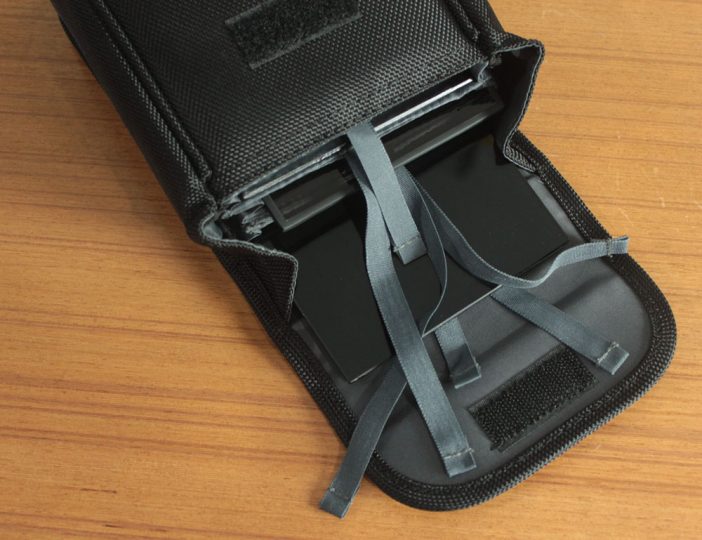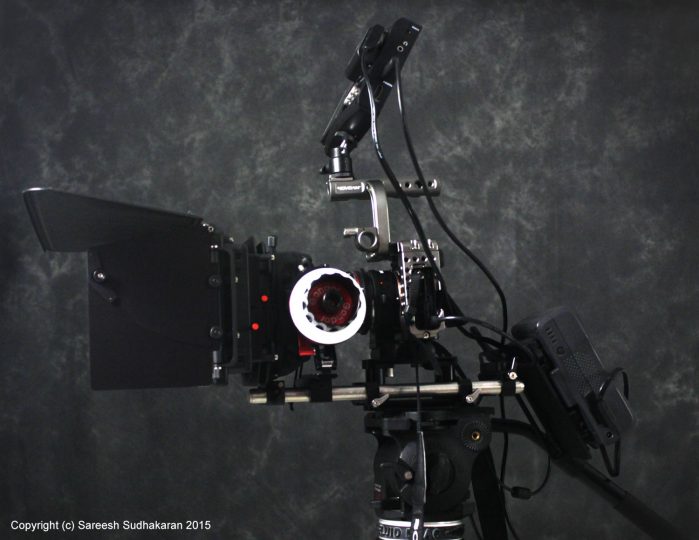In Part Three we covered cine and zoom lenses. In this part we’ll look at filters and internal recording for the Sony a7R II.
Filters for the Sony a7R II
To know more about camera filters and when to use them, read the Complete Guide to Lens Filters.
 ND Filters
ND Filters
Important Note: Prices and specifications may be inaccurate or unavailable. Please refer to manufacturers’ websites for correct information.
Like the Sony A7s, I fully expect the a7R II to be prone to IR pollution over 4 stops of ND. However, the base ISO for S-Log2 on the A7r II is ISO 800, so you are in less desperate need for ND filters.
I would expect the ‘best usable’ ISO range for S-Log2 to be from 800 to 3200 (maximum). Other modes will start at base ISO and might be probably okay till ISO 1600. It doesn’t mean you can’t shoot above it, just that the footage won’t match due to too much noise.
Here are some common lighting scenarios and f-stops at ISO 100, and what ISO 800 does to it (shutter is at 1/50s):
- Sunny 16 rule (bright outdoors) – f/32 @ISO 100, f/98 @ ISO 3200 (which is impossible. Even f/32 is rarely found on 35mm lenses, if at all)
- Studio environment (1000 lux) – f/2.8 @ISO 100, f/8 @ISO 800
- General office ambience/golden hour – f/2 @ISO 100, f/5.6 @ISO 800
- Moody home ambience – f/1 @ISO 100, f/2.8 @ISO 800
If you want the shallow depth of field aesthetic, you have no choice but to use ND filters. Most people who shoot do so at standard apertures of f/2.8 or f/4. For general shooting even, you’ll need an ND range of about 0.3 (one stop) to 2.4 (eight stops).
Most shooters try to cheap out by buying one variable ND filter for the entire range, but as mentioned earlier, IR pollution kicks in at 4 stops. Therefore, if image quality is your prime concern, I strongly advise you to stay away from variable ND filters. It is also not a good idea to stack ND filters for various reasons.
So, what should you do? You can assume that the image quality will be fine at base ISO and at least one ISO higher. E.g., in S-Log2, the base ISO is 800 and you won’t be too badly off at ISO 1600. So rather than getting 8 ND filters, you can get just these four:
- 0.6 – 2 stops. If it’s too much you can open up the ISO by one stop to get a 1-stop ND.
- 1.2 – 4 stops (get an IRND filter, NOT a hot mirror ND). If it’s too much you can open up the ISO by one stop to get a 3-stop ND.
- 1.8 – 6 stops (get an IRND filter, NOT a hot mirror ND). If it’s too much you can open up the ISO by one stop to get a 5-stop ND.
- 2.4 – 8 stops (get an IRND filter, NOT a hot mirror ND). If it’s too much you can open up the ISO by one stop to get a 7-stop ND.
I use and recommend Formatt Firecrest IRND filters, though they are expensive and in limited stock:
- Circle threaded filters: Formatt Firecrest or ProStop IRND
- 4×4 (2mm): Lee, Haida
- 4×4 (4mm): Formatt Firecrest IRND
- 4×5.65 (4mm): Formatt Firecrest IRND
Sometimes, you get a better deal on Amazon for filters. That’s how I bought mine.
Variable ND filters
I recommend the following ranges at 77mm:
As you can see, these are not cheap either. I will never recommend cheap vari-ND filters. Variable ND filters are more convenient to carry, and you don’t need to change them around as much. Still, don’t forget to take into account IR pollution, which will be a factor.
For other filters, such as polarizing, split/grad ND, IR, etc., check out my recommendations in the Complete Guide to Lens Filters.

Internal Recording
The Sony a7R II comes in three versions:
- PAL
- NTSC
- Both
Depending on which country you purchase from, you might have only one of the above options. You might want to make sure you purchase the option with the frame rate you want. Here’s how they differ:
| Res. | PAL | NTSC | Codec | Data Rate Mbps | Wrapper |
| 3840x2160p | 25p | 24p, 30p | XAVC S | 100 | MP4 |
| 1080p | 25p, 50p | 24p, 30p, 60p | XAVC S | 50 | MP4 |
| 50p | 60p | AVCHD | 28 | MP4 | |
| 25p, 50i | 24p, 60i | AVCHD | 24 | MP4 | |
| 25p, 50i | 24p, 60i | AVCHD | 17 | MP4 | |
| 720p | 100p | 120p | XAVC S | 50 | MP4 |
| 1440x 1080 | 25p | 30p | MPEG-4 | 12 | MP4 |
| 640x 480 | 25p | 30p | MPEG-4 | 3 | MP4 |
The formats in red are not recommended. After having tested AVCHD vs XAVC S, I cannot recommend AVCHD for professional work, at least as implemented on this camera. However, for all other kinds of video, it might be sufficient.
All three codecs are a variant of MPEG-4 AVC/H.264 family, though XAVC is the easiest on your editing system. Within XAVC S, I recommend you always record at the highest data rate, which is 50 Mbps for 1080p and 100 Mbps for UHD. XAVC S is supported by most of the major NLEs, including Adobe Premiere Pro, FCP-X and Sony Vegas Pro.
A quick note: XAVC S is the consumer version of the XAVC family, and does not have any useful metadata on the a7R II.
This is how the data rate would translate into hard drive space:
| UHD | 1080p |
| 750 MB/minute | 375 MB/minute |
| About 46 GB/hour | About 23 GB/hour |
| A 16 GB card will hold about 20 minutes worth of footage in 2160p. | A 16 GB card will hold about 40 minutes worth of footage in 1080p. |
The cards supported are:
- Memory Stick PRO Duo,
- Memory Stick PRO-HG Duo,
- Memory Stick XC-HG Duo,
- SD memory card,
- SDHC memory card (UHS-I compliant),
- SDXC memory card (UHS-I compliant)
For SDXC cards, buy Sandisk (specifically Sandisk Extreme Pro). The lowest size compatible for XAVC S is 64 GB, as with the Sony A7s.
Even though you have internal recording at 100 Mbps, the camera outputs 4:2:2 uncompressed via HDMI which can be written to a better codec like Prores or DNxHR/HD. That’s what we’ll look at in Part Five.
